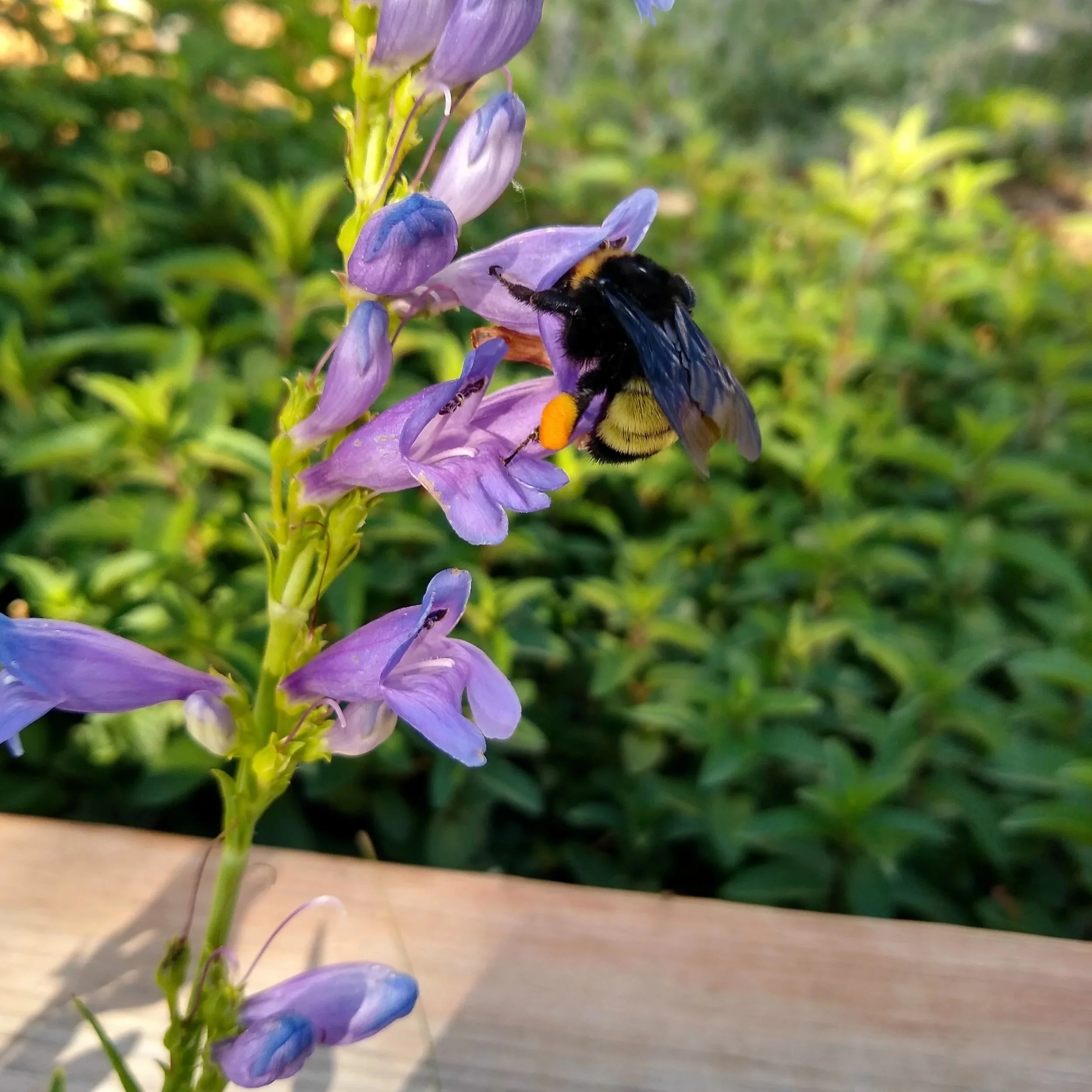My Summer With Bees
Bombus Auricomus enjoying flowering penstemon.
The Hole That Changed Everything
It started with a single, perfectly round hole. Not the jagged nibble of a grasshopper or the lazy chew of a beetle. This was a clean, deliberate cut in a leaf in my garden. It looked like someone had used a miniature hole punch. I had to know: what could possibly make such a precise hole?
A little research led me to a delightful discovery, the leafcutter bee. Like many people, my bee knowledge was limited to honeybees and the occasional bumblebee (which, fun fact, isn’t hiding a giant stinger). But the world of bees is vast and wildly diverse, and I was hooked. I needed to see one in action.
Building a Bee Bungalow
Once you learn about leafcutter bees, you want to meet them and better yet, host them. So, I built a bee house. Unlike honeybees, leafcutters are solitary and nest in small holes, creating cozy chambers for their larvae. I cobbled together a frame from scrap wood and filled it with logs from a recently felled tree, drilling quarter-inch holes throughout. I added pinecones, rocks, and bamboo tubes to fill the gaps.
With my bee house nestled in the garden, I waited for my new tenants to arrive.
Nature’s RSVP: Delayed
Days turned into weeks. No bees. My invitation must’ve gotten lost in the wind. Still, the house looked good, and removing it would’ve been a hassle. Plus, nature doesn’t operate on our schedule. I once read that interacting with nature is like tossing a pebble into a still lake. You have to wait for the ripples to fade before life returns.
So, I waited.
Buzzing to Life
Winter came and went. Spring tiptoed in. One morning, while tending the soil near the bee house, I heard it! A faint buzz. I followed the buzz (which I highly recommend doing anytime you hear it) and there it was: my first leafcutter bee, nearly a year after I built the house. I was ecstatic! Soon, more bees arrived, each one busy crafting their nests. The bee house was officially open for business.
But the surprises didn’t stop there.
A Pollinator Parade
With my eyes now tuned to the world of bees, I began spotting species I’d never noticed before like mason bees, sweat bees, carter bees, various bumblebees, and more. I became obsessed with documenting them, snapping photos and trying to ID each visitor. Some bees were natural models, posing without a care. Others (looking at you, sweat bees) were elusive and camera-shy. I spent hours waiting, deleting blurry shots, and trying again.
Then came the wasps.
At first, I was terrified. Some, like the great black wasp, are massive and look like they could carry you away. But I learned that most wasps are solitary, docile, and misunderstood. They help control pests and even contribute to pollination. The garden was becoming a bustling ecosystem and I was just beginning to understand it. (More on my journey befriending wasps on a later post)
A Garden Transformed
By the end of summer, I had documented nearly twenty different species of bees and wasps. What started as a curiosity about a tiny hole in a leaf turned into a full-blown adventure in biodiversity. My garden wasn’t just a place for plants It was a thriving community of pollinators, each playing a role in keeping the ecosystem alive.
Watching them coexist, each species with its own rhythm and purpose, was a quiet kind of magic. It reminded me that even the smallest creatures can teach us patience, wonder, and the joy of noticing.
Final Thought
If you ever spot a perfectly round hole in a leaf, don’t dismiss it. It might just be the beginning of your own journey into the hidden world of pollinators. Build a bee house. Sit still. Listen for the buzz. And let nature surprise you.





















